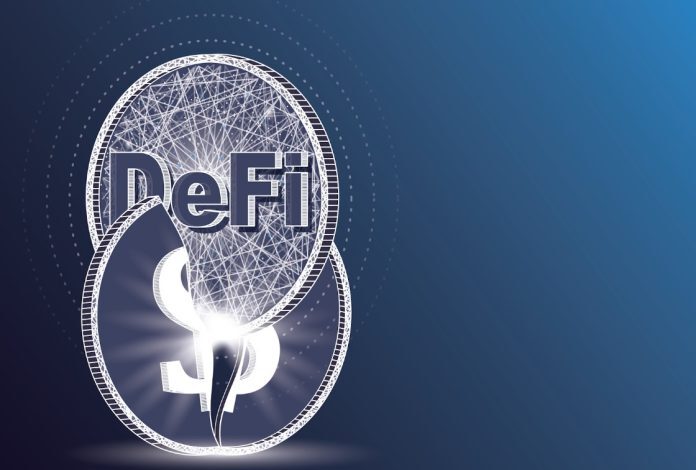5 Investment Opportunities In DeFi

More investors come to DeFi as it grows to partake in the passive income pie. Investment in DeFi was at its maximum during the last quarter of 2021 when it had over $250 billion in locked value.
The resilience of the DeFi sector has been impacted by the gloomy cryptocurrency market this year. Nevertheless, investors continue to swarm to DeFi for the benefits it offers.
Do you want to invest in DeFi but are unsure where to begin? Or perhaps you’re a seasoned investor trying to diversify your holdings. Five of the best DeFi investing options for 2022 are covered in this article.
DeFi Staking
One of the most well-liked investing options in DeFi is DeFi staking. Staking entails “locking” a network’s native tokens to receive more of the native token as payment. Keep in mind that staking only functions for blockchains that validate blocks using the proof-of-stake consensus technique. Anyone may bet. In actuality, one of the factors drawing individuals to DeFi investment is the low entrance hurdle.
Using a portfolio tracker like valktech.io is one way to keep an eye on your investments. These portfolio trackers enable you to monitor the performance of your assets. Additionally, it aids in selecting beneficial ventures with the highest likelihood of success. Bring a portfolio tracker with you as you start your investing journey.
However, staking regulations vary from network to network. Potential investors may need to stake a minimum number of coins on some blockchain networks. The bare minimum stake in Ethereum 2.0 is 32 ETH.
How does staking pay off for investors?
When investors stake a native token, a smart contract locks in their tickets, which is a set of codes governing the network’s operations. After then, the user joins the network’s validators. Network validators have a duty to the web to supervise and validate the transactions. Successful validators receive some of the native tokens as payment.
DeFi investors love to stake, and here’s how you can start immediately.
- Choose a DeFi Staking Platform;
- Purchase and deposit cryptocurrency funds for staking;
- Choose a validator;
- Earn staking rewards.
Be A Liquidity Provider
Providing liquidity is another way to get passive revenue on DeFi. Liquidity is provided on decentralized exchanges (DEX) that provide services for exchanging cryptocurrencies. Every DEX permits the sale of two tokens, such as ETH and USDT, for another. The exchange pool must have equal amounts of crypto tokens for DEXs to operate. Anyone may add tickets to this pool; those who do so are referred to as liquidity providers (LPs).
Tokens from liquidity providers are staked in the smart contract that governs the pool. LPs receive a portion of the transaction fees for the swap in proportion to the number of staked tokens in return for supplying liquidity for the DEX.
Liquidity provisioning doesn’t have a minimum token requirement like DeFi staking, which makes it an excellent option for novice investors or those looking to start modestly.
There aren’t many liquidity risks, but the biggest one is impermanent loss, in which LPs may suffer financial losses due to the volatility of specific tokens. Being an LP for a DEX with more dependable tickets lowers the likelihood of passing loss.
DeFi Yield Farming
DeFi yield farming is an intricate blend of liquidity and staking that offers large profits with correspondingly significant risk. By staking tokens in a smart contract to supply liquidity in a liquidity pool, you can engage in DeFi yield farming. The liquidity pool then uses the staked tokens for another DeFi protocol. The first-tier investors receive a portion of the returns from this second-tier investment.
In a liquidity pool, for instance, you and nine other users stake some ETH, and the pooled tokens are then invested in another DeFi protocol. You and the other nine users split the profits from this investment based on the number of tickets you staked.
One obvious distinction between yield farming and staking or liquidity provision is that your incentives may come in the form of other tokens. Starting with ETH investments, you can move on to BNB for passive income.
DeFi Lending
Peer-to-peer (P2P) lending is one of DeFi’s most popular services. This program has not only made loans available to borrowers, but it also gives lenders a way to generate passive revenue.
Users lock their tokens into a smart contract that controls the liquidity pool for DeFi lending to function. Borrowers can borrow money from users per a contract established and upheld by a smart contract. The intelligent contracts specify the interest rates and loan terms and guarantee loan repayment by locking the borrower’s collaterals.
A yield is provided to users when the borrower pays, including the interest (APY). The APY is a method of calculating interest that accounts for compound interest.
Intelligent contracts govern DeFi lending, yet there is still a chance that the borrower won’t repay the loan when it is due. DeFi lending is less risky than high-risk investments like yield farming.
Hodling DeFi Coins/DeFi Trading
Anyone familiar with cryptocurrency is familiar with the phrase hodling. If you’re new to the world of cryptocurrencies, hodling is the practice of purchasing tokens at a discount and then selling them at a higher price to make a profit. It is among the most popular investment methods on DeFi.
While it might seem obvious, hodling doesn’t always result in a profit, especially when dealing with volatile tokens. Hodling carries significant risks and uncertain, moderate benefits.
What Happens Next?
Given the abundance of available investment opportunities, it can be tempting to jump right in and purchase up DeFi tokens to generate highly profitable investments. However, taking a step back and assessing your assets is crucial, particularly if you’re a novice.




